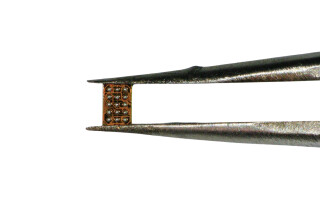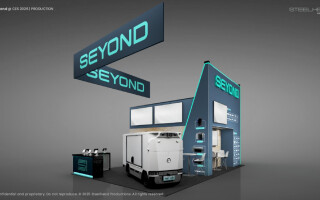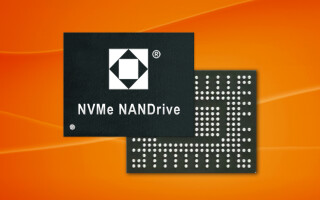Artificial Intelligence and Machine Learning Based Image Processing
December 16, 2022
Blog

The popularity of computer vision is growing like never before and its application is spanning across industries from consumer electronics and retail to manufacturing. With a variety of use cases including visualization, pattern recognition, segmentation, image information extraction, and classification, image processing can be done in two ways:
- Analog image processing of physical photographs, printouts, and other hard copies of images
- Digital image processing using computer algorithms to manipulate digital images
The input in both cases is an image. The output of analog image processing is always an image, but the output of digital image processing may be an image or information associated with that image, such as data on features, attributes, and bounding boxes.
According to a report published by Data Bridge Market Research analyses, the image processing systems market is expected to grow at a CAGR of 21.8%, registering a market value of USD 151,632.6 million by 2029.
Image Processing Working Mechanism
Artificial intelligence and Machine Learning algorithms usually use a workflow to learn from data. To start, AI algorithms require a large amount of high-quality data to learn and predict highly accurate results. As a result, we must ensure that the images are well-processed, annotated, and generic for AI/ML image processing. From there, computer vision (CV) can be used to process, load, transform, and manipulate images to create an ideal dataset for the AI algorithm.

An overview of the basic workflow of an image processing system
Acquisition of image: The initial level begins with image pre-processing, which uses a sensor to capture the image and transform it into a usable format.
Enhancement of image: The technique of bringing out and emphasizing specific interesting characteristics hidden in an image.
Restoration of image: The process of enhancing an image's look utilizing specific mathematical or probabilistic models.
Color image processing: A variety of digital color modeling approaches such as HSI (Hue-Saturation-Intensity), CMY (Cyan-Magenta-Yellow), and RGB (Red-Green-Blue).
Image compression/decompression: This enables adjustments to image resolution and size without lowering image quality below a desirable level. Lossy and lossless compression techniques are the two main types of image file compression employed in this stage.
Morphological processing: Digital images are processed depending on their shapes using an image processing technique known as morphological operations. The operations depend on pixel values rather than numerical values, and are well-suited to the processing of binary images. It aids in removing imperfections for structure of the image.
Segmentation, representation, and description: The segmentation process divides a picture into segments, and each of which is represented and described in such a way that it can be processed further by a computer. The image's quality and regional characteristics are covered by representation. The description's job is to extract quantitative data that helps distinguish one class of items from another.
Recognition of image: A label is given to an object through recognition based on its description. Some of the often-employed algorithms in this process include the Scale-invariant Feature Transform (SIFT), the Speeded Up Robust Features (SURF), and the PCA (Principal Component Analysis).
Frameworks for AI Image Processing
Open CV
OpenCV is a computer vision library that provides numerous algorithms and support tools including modules for object detection, machine learning, and image processing. These tools assist in picture processing tasks like data extraction, restoration, and compression.
TensorFlow
TensorFlow is an end-to-end ML programming framework for tackling the challenges of building and training a neural network to automatically locate and categorize images to a level of human perception. It offers functionalities like work on multiple parallel processors, cross platform, GPU configuration, and support for a range of neural network algorithms.
PyTorch
Intended to shorten the time it takes to get from a research prototype to commercial development, PyTorch includes features like a tool and library ecosystem, support for popular cloud platforms, and distribution training.
Caffe
This deep learning framework is intended for image classification and segmentation. It has features like simple CPU and GPU switching, optimized model definition and configuration, computation utilising blobs, etc.
Applications
Machine vision
Digital signal processing and analog-to-digital conversion are combined with one or more video cameras. The image data is transmitted to a robot controller or computer. This technology aids in improving automated processes through automated analysis. For instance, specialized machine vision image processing methods can frequently sort parts more efficiently when tactile methods are insufficient for robotic systems to sort through various shapes and sizes of parts. These methods use very specific algorithms that consider the parameters of colors or greyscale values in the image to accurately define objects’ outlines or sizing.
Pattern recognition
The classification of data generally takes place based on previously acquired knowledge or statistical data extrapolated from patterns and/or their representation. Image processing is used in pattern recognition to identify the items in an image, and machine learning is then used to train the system to recognize changes in patterns. Pattern recognition is utilized in computer assisted diagnosis, handwriting recognition, image identification, character recognition, etc.
Digital video processing
The number of frames or photos in a video per minute and the calibre of each frame employed determine the video's quality. Noise reduction, detail improvement, motion detection, frame rate conversion, aspect ratio conversion, and color space conversion, are all aspects of video processing. Televisions, VCRs, DVD players, video codecs, and other devices all use video processing techniques.
Transmission and encoding
Technological advancements allow instant viewing of live CCTV footage or video feeds from anywhere in the world, indicating significant progress in image transmission and encoding technology. Progressive image transmission is a technique of encoding and decoding digital information that represents an image so its main features, like outlines, can be initially presented at low resolution and then refined to greater resolutions.
An image is encoded by an electronic analog to multiple scans of the exact image at different resolutions in progressive transmission. Progressive image decoding results in a preliminary approximate reconstruction of the image, followed by successively better images whose adherence is gradually built up from succeeding scan results at the receiver side. Additionally, image compression reduces the amount of data needed to describe a digital image by eliminating extra data, ensuring that the image processing is finished and suitable for transmission.
Image sharpening and restoration
Here, the terms "image sharpening" and "restoration" refer to the processes used to enhance or edit photographs taken with a modern camera to produce desired results. Zooming, blurring, sharpening, converting from grayscale to color, identifying edges, image retrieval, and image recognition are included. Restoration techniques aim to recover lost resolution and reduce. Either the frequency domain or the image domain is used for image processing techniques. Deconvolution, which is carried out in the frequency domain, is the easiest and most used technique for image restoration.
Image processing can be employed to enhance an image's quality, remove unwanted artifacts from an image, or even create new images completely from scratch. Nowadays, image processing is one of the fastest-growing technologies, and it has a huge potential for future wide adoption in areas such as video and 3D graphics, statistical image processing, recognizing and tracking people and objects, diagnosing medical conditions, PCB inspection, robotic guidance and control, and automatic driving in all modes of transportation.





